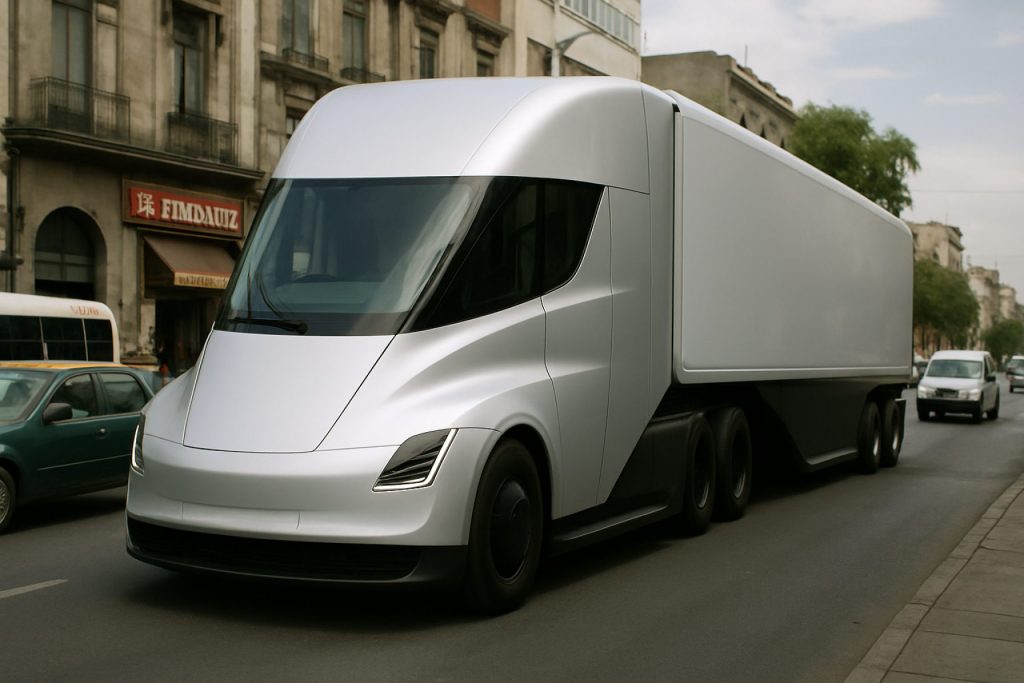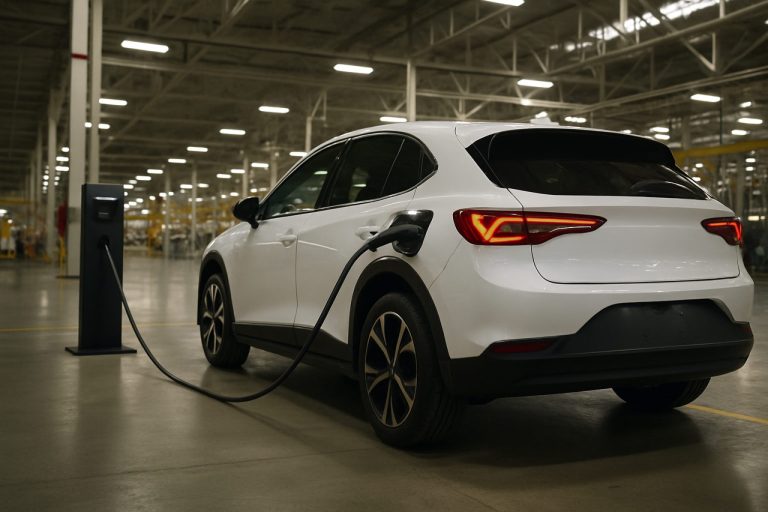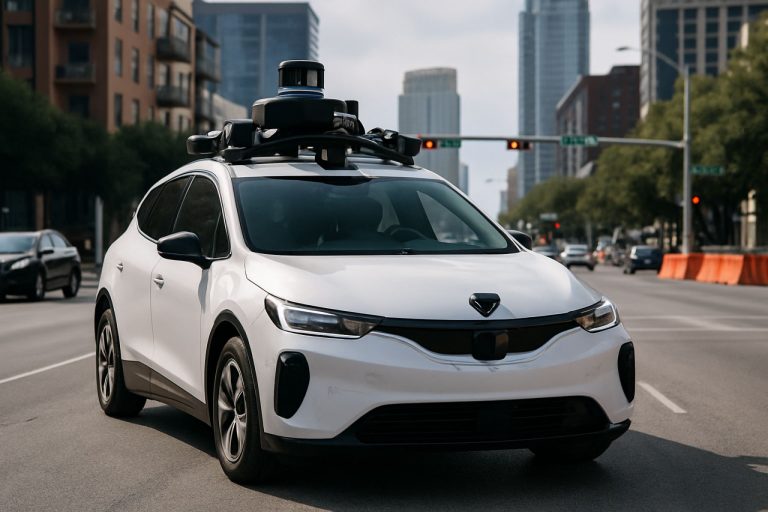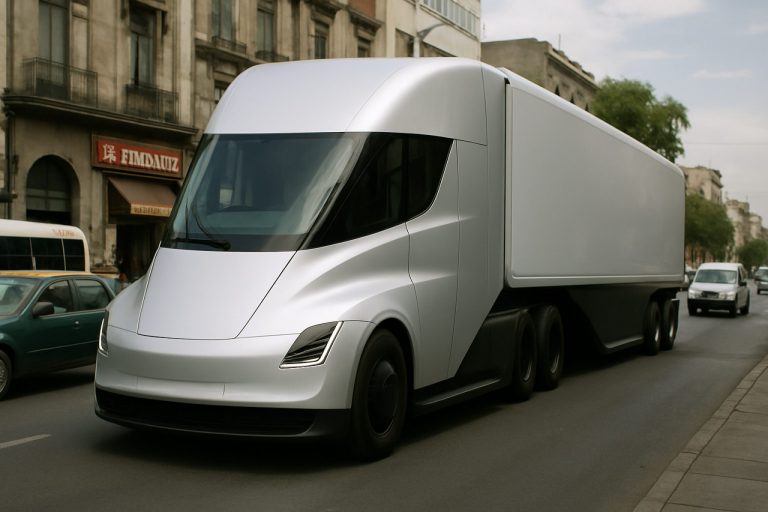
- Jalisco, Mexico has added Tesla Cybertrucks and Black Mamba Sandcats to its police fleet to modernize public security ahead of the 2026 FIFA World Cup.
- The Cybertrucks serve as mobile command centers, using AI surveillance and Starlink internet, a first for Mexican law enforcement.
- This high-profile security upgrade aims to boost safety and confidence as millions of visitors are expected next summer.
- Critics question the cost, effectiveness, and transparency of the investment, viewing it as possibly more spectacle than substance.
- The impact of these advanced vehicles will be judged by real-world results—not just innovation or appearance—as Jalisco balances security, technology, and global scrutiny.
Sunlight blazes on the chrome-edged silhouettes cutting through Guadalajara’s labyrinth of boulevards. Not since the arrival of the first Model T has an automobile attracted such attention — but this is no ordinary car. The Tesla Cybertruck, all angles and armored glass, now flashes its LED lights as it takes up patrol in the police fleet of Jalisco, Mexico’s vibrant western state. In a nation wrestling with perceptions of public security, three of these electric behemoths have become both symbols of aspiration and lightning rods for debate.
Modernization or Marketing Gimmick?
Jalisco’s governor, Pablo Lemus Navarro, showcased the state’s 678-vehicle security upgrade as a bold statement in the lead-up to the 2026 FIFA World Cup. More than 5 million fans are expected to descend on Guadalajara, Puerto Vallarta, and the agave-rich hills of Tequila next summer — and officials hope gleaming new vehicles will help instill confidence while the world watches.
These Cybertrucks aren’t alone. They’re joined by Black Mamba Sandcats, hulking armored vehicles with a demeanor that conjures up military convoys in far rougher corners of the globe. Their deployment signals an intention: to project both resilience and readiness, painting an image of Jalisco not just as host, but as guardian.
State leaders defend the nearly 1 billion peso investment as essential. Rolling out the Cybertrucks as mobile command centers, police promise new technology and vigilance, leveraging AI-driven surveillance and Elon Musk’s own Starlink internet — a first for any Mexican police force.
Clashing Perspectives: Admiration, Mockery, and Demand for Transparency
While American officials have hailed the state’s futuristic stride, Jalisco’s choice has triggered unrest close to home. Political adversaries, especially from the ruling Morena party, dismiss the Cybertruck convoy as more show than substance. Some liken the scene to a Hollywood spectacle, while others question the wisdom of spending over $100,000 per vehicle, especially given Tesla’s record of multiple recalls, including a recent alert for exterior trim detachment.
Questions of effectiveness ripple through public discourse. Skeptics press for proof that these silicon-and-steel marvels — eye-catching as they are — will actually dent crime rates in one of Mexico’s most watched states. And in a country where fiscal priorities routinely spark controversy, detailed scrutiny of the public bidding process looms large.
Innovation at What Price?
This moment in Jalisco’s history crystallizes a global tension: Can investment in technological spectacle secure—not just symbolize—public safety? Advanced AI license plate readers, high-definition surveillance, and real-time connectivity are state-of-the-art tools, but their impact will be measured against the everyday realities on Jalisco’s streets.
As the 2026 World Cup draws closer, those titanium-edged Cybertrucks serve not just as vehicles of law enforcement, but as rolling metaphors for a state — and a country — caught between its hopes for progress and the sharp scrutiny of reality.
The takeaway: In security and spectacle alike, true confidence will only come from results, not appearances. Jalisco’s gamble will unfold in plain view of the world, its futuristic vision facing the ultimate test amid a sea of passionate fans and prying cameras.
For more about evolving technologies, visit Tesla or learn about Jalisco’s security initiatives at Jalisco’s official site.
Why Jalisco’s Tesla Cybertruck Police Fleet Is Sparking Global Buzz (and What It Means for the Future of Law Enforcement)
Behind the Headlines: Deeper Insights On Jalisco’s Cybertruck Police Squad
Jalisco, Mexico’s dynamic western state, has thrust itself into the international spotlight with its headline-grabbing addition of three Tesla Cybertrucks to the local police force. As the world gears up for the 2026 FIFA World Cup, Jalisco’s bold move is raising eyebrows, fueling debate, and forcing us to ask: will high-tech security on wheels actually result in safer streets, or is it all for show?
Below, we dig deeper into key facts not fully explored in the original article, address the most pressing questions, deliver expert analysis, and offer actionable insights for citizens and decision-makers alike.
—
Notable Cybertruck Facts & Police Use Cases
1. Cybertruck Performance and Specs
– The Tesla Cybertruck boasts 0–60 mph in under 2.9 seconds (Tri-Motor variant), making it one of the fastest pickups available (source: Tesla).
– Its stainless-steel exoskeleton and Tesla Armor Glass offer unparalleled protection against small arms fire and impacts, which can be key in high-risk police operations.
– Real world range: up to 340 miles per charge (dual motor variant), though heavy police equipment can affect battery life.
2. AI and Data Connectivity
– Integration with Starlink means that officers have uninterrupted hyperfast internet, allowing live streaming of incidents, faster report filing, and real-time crime database access — a first among Mexican police agencies.
– High-resolution cameras paired with AI license plate readers can analyze and flag suspicious vehicles within seconds.
3. Upgrades vs. Traditional Fleets
– Compared to conventional police trucks, electric vehicles like the Cybertruck reduce long-term fuel and maintenance costs (expected savings: $4,000–$7,000 annually per unit, per Bloomberg NEF).
– Armored upfitting is standard for these patrol trucks, comparable to military-grade vehicles like the Sandcat, further raising durability and officer safety metrics.
—
Key Questions & Expert Answers
Is spending over $100,000 per Cybertruck justified?
Short term, the sticker shock is real. But factoring in reduced maintenance, no-fuel operation, and increased tech capabilities, the investment could pay off over 8–10 years, especially as fuel prices rise. Still, transparency around the bidding and procurement process is essential for public trust (source: Transparency International).
Do electric vehicles like Cybertrucks cope well in police work?
In urban patrols, yes: instant torque, silent approach, and integrated surveillance make EVs viable. However, rural and extended operations remain a challenge due to Mexico’s uneven charging grid.
What are the main limitations?
– Charging infrastructure: Jalisco needs more fast-charging stations for reliable 24/7 police operation. As of 2024, less than 5% of Mexico’s charging stations support ultra-fast charging.
– Recall Track Record: Tesla has issued multiple recalls affecting hardware and software. While most fixes are over-the-air, downtime for police-critical equipment still raises concerns.
– Cost-to-impact ratio: Critics argue public funds might be better spent on community-oriented policing or crime prevention programs.
How does the Cybertruck compare to alternatives?
Compared with traditional Ford F-150 police vehicles:
– Lower emissions (zero tailpipe)
– Higher upfront cost but better long-term savings
– More advanced onboard tech (cameras, sensors)
– Unproven in extreme/long-duration field conditions in Mexico’s climate
—
Legal, Social, and Market Trends
Security & Sustainability:
EV patrol cars cut operational emissions significantly, aligning with Mexico’s GHG reduction targets. This underscores a global trend of cities electrifying public fleets (see similar moves in Norway, Los Angeles).
Controversies:
Public debate swirls around appearance vs. substance. Some police unions voice concern about “photo op” vehicles overshadowing deeper security reforms. Others appreciate the morale boost and deterrence factor—visible, futuristic tools may intimidate would-be offenders.
Market Forecasts:
According to EV industry analysts (EV-Volumes, 2024), Latin American police fleets are expected to grow their EV share by 16% annually through 2030 as costs drop and technology matures.
—
Quick Tips & Recommendations
For Other Cities Interested in EV Police Fleets:
– Start with pilot programs—evaluate EVs in daily patrol use before full adoption.
– Ensure fast-charging stations are available at every major precinct.
– Train officers in EV tech, maintenance, and safe battery handling.
– Appoint transparency committees to oversee procurement.
For Jalisco Residents:
– Use state resources to monitor how new tech impacts public safety. Demand clear, frequent reporting.
– Engage with town halls to see if visible high-tech policing is matched by investments in neighborhood safety programs.
For Police Vehicle Review Enthusiasts:
– Watch how Jalisco’s experiment influences other cities in North and South America — will Cybertrucks become a global norm or a local anomaly?
– Compare ongoing vehicle downtime, response time, and maintenance costs for Cybertruck vs. incumbent models.
—
Final Takeaway
Jalisco’s adoption of the Tesla Cybertruck as a police vehicle is more than a marketing stunt—it’s a bold real-world trial of next-generation law enforcement technology. The outcome will hinge not on how these armored EVs look in public, but how effectively they deter and respond to crime, especially with the 2026 World Cup on the horizon.
To keep up with the latest in electric vehicle innovation and official policy, visit Tesla or check updates from Jalisco’s official site.
Actionable next steps:
For technophiles, track Jalisco’s crime stats over the next 18 months. For policymakers, weigh investment in tech with measured, transparent outcomes. For citizens, keep asking: does high-tech security deliver peace of mind—or just flashy headlines?



